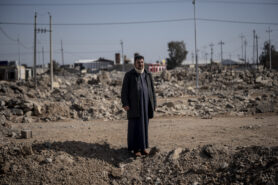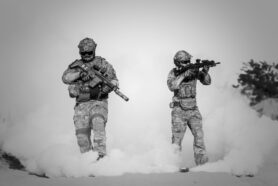Since 2001, there has been a striking increase in the number of US military aid flowing to foreign governments. Between 2002 and 2019, the US spend 300 billion dollars in security assistance to foreign governments and at least one million foreign nationals received US military training. The US uses security assistance to advance a variety of foreign policy goals, such as improving the ability of foreign militaries to conduct joint operations with US forces. Associate Professor at the University of North California Patricia L. Sullivan discusses her findings on how state violence varies based on the type of security assistance the US provides and the institutional environment in the recipient state in her research article published in 2023.
Studies give contradictory results on the impact of military aid on civilian harm according to Sullivan. Several studies have found that security assistance leads to an increase of civilian harm, while other studies find a negative relationship meaning that security assistance leads to a decrease of civilian harm.
Sullivan used several hypotheses to study the relationship between military aid and civilian harm. She expected that foreign security assistance will increase extrajudicial killings by state security forces, especially lethal aid compared to non-lethal aid. Lethal aid includes military equipment, weapons, military training, and combat assistance, while non-lethal aid is a broad category that includes professional military education, defense institution-building, and disarmament initiatives. Besides that, she expected that lethal aid will be less likely to increase extrajudicial killings by state security forces in states with institutional constraints on executive authority compared to states with fragmented internal security forces.
To test the hypotheses, she used a panel dataset of low- and middle-income countries from 2002 to 2019. The results suggest that lethal aid increases extrajudicial killings by security forces in states without effective institutions to constrain executive authority. In contrast, non-lethal security assistance has a dampening effect on extrajudicial killings, but only in states with effective institutions. All types of security aid increase civilian targeting in states with fragmented internal security forces. The results of this study highlight the importance of the type of military aid and the institutional arrangements in the states receiving foreign security assistance.
Read the full article by clicking on the reference below.
This post was written by IRW LAB student Cemre Açikgöz.



